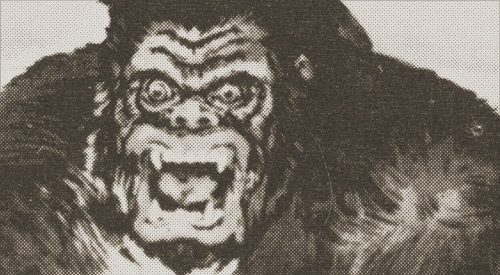I came across a few photos of a lowland gorilla in a book about the history of the circus which piqued my interest. I’m a big fan of the primate you see (some being dearer to my heart than others) and I went searching the web to find out more. The Ringling Brothers Barnum & Bailey Circus billed him as “Gargantua The Great, the world’s most terrifying creature” but as it turns out a previous owner had dubbed him Buddy, short for Buddha, and he had a very sad past. Not only that but he was scared of lighting. What follows are a few brief notes on Buddy’s story and some related images.
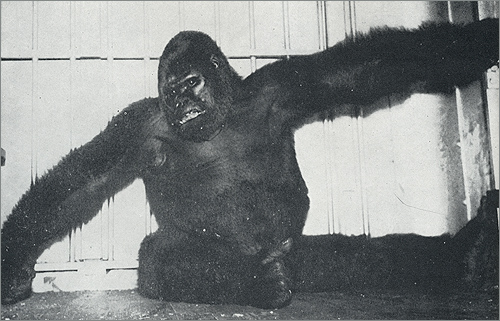
Essentially the story of Buddy goes like this: In the Mid-30’s a baby gorilla was offered to a freighter captain as a gift from some friends who were African missionaries. The Captain accepted and brought the gorilla aboard his ship, naming him Buddy. He was adopted by the crew and became the darling of the ship being given specially prepared foods, taught to preform seaman duties, and otherwise adored.
A sailor aboard the ship took exception to the discipline doled out by the Captain and knowing how fond the captain was of the baby gorilla threw nitric acid in Buddy’s face as a means of vengeance. Buddy was nearly blinded and forever disfigured. Buddy hid himself refusing food, shrieking, and attacking anyone who came near. The sailors, at a loss for what to do, urged the captain the euthanize Buddy, but the captain knew a wealthy woman in Brooklyn who cared for sick animals and decided instead to bring Buddy to her.
Her name was Mrs. Gertrude Lintz and she was a bit of an eccentric.
Under Mrs. Lintz care Buddy grew to a huge 600 lbs. A plastic surgeon attempted to repair his disfigured face but left him with a permanent terrifying sneer otherwise out of character with his gentle nature.
Evidently one night it was stormy out. Buddy was frightened by the thunder and lighting and broke out of his cage. He crawled like a frightened child into bed with Mrs. Lintz. She decided then and there to give the 600 lb. eight year old lowland gorilla to the circus. She contacted John Ringling in 1937 who came to Brooklyn to see Buddy. He was later quoted as saying:
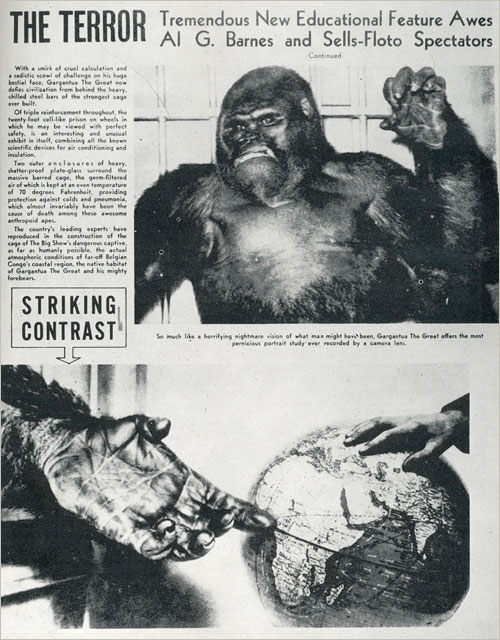
Ringling bought Buddy on the spot, and renaming him (at his wife’s suggestion) Gargantua, after Rabelais’ giant king of Gargantua and Pantagruel, launched an advertising campaign centered around the gorilla which hailed him as “the largest gorilla ever exhibited” and “the most terrifying living creature.” Millions flocked to see Gargantua. He was a huge success as an attraction which single handedly helped rebound Ringling Brothers & Barnum and Bailey from the ruinous period of the Great depression.
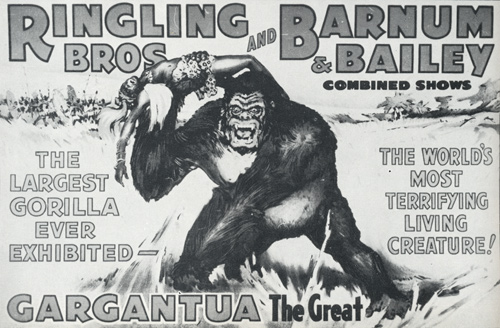
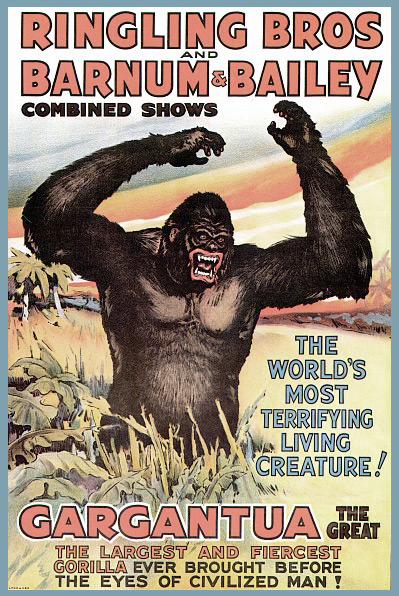
The circus built Gargantua his own special air-conditioned cage on wheels and toured him successfully for years.
From Time magazine, 1938-

June of 1938 saw one of the few comical aspects of the gargantua story when former heavyweight boxing champion Gene Tunny revived the age old Ape vs. Man argument with an article in the Connecticut Nutmeg in which he wrote the following:
In 1941 as a publicity stunt a “marriage ceremony” took place as Gargantua took a female gorilla named Mitoto as his wife. Called “Toto” for short. (Toto had also been property of an affluent woman who during tea with the gorilla had her both her wrists snapped.) Mitoto, Swahili for “Little One,” became known as simply “Mrs. Gargantua.” Ringling had hoped to mate the gorillas. Their first meeting was romanticized in a time Magazine article in March of 41-

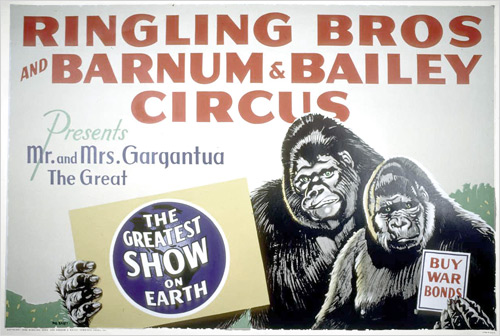
In point of fact all that really happened was Gargantua threw some rotten vegetables at his intended mate. Though they toured together for many years they never mated or had offspring.

When in 1949 it became obvious that he was not well, no one dared approach him to find out what the trouble was. He died that November of double pneumonia. Gorillas in captivity often live for 40 years or more, Gargantua, however, was only 20. Newspapers announced his passing with prominent headlines and in 1950 Gargantua’s skeleton was donated to the Peabody Museum where it is still on display.
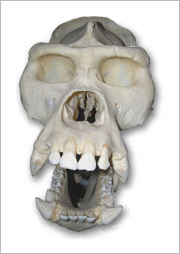
A sad story if you ask me, one which was later desecrated further in the 1997 flick Buddy. Poor ol’ Buddy.
